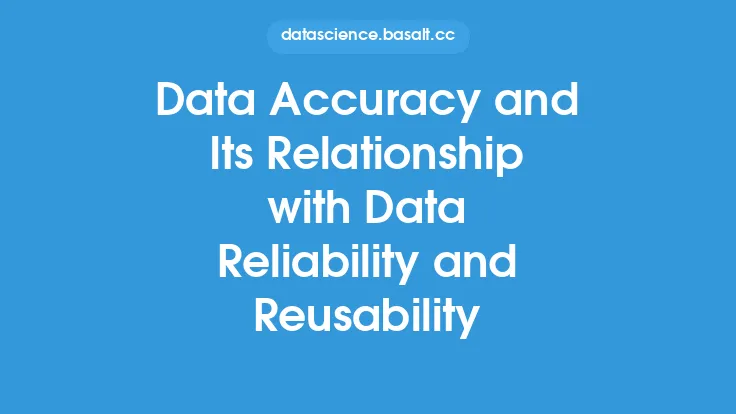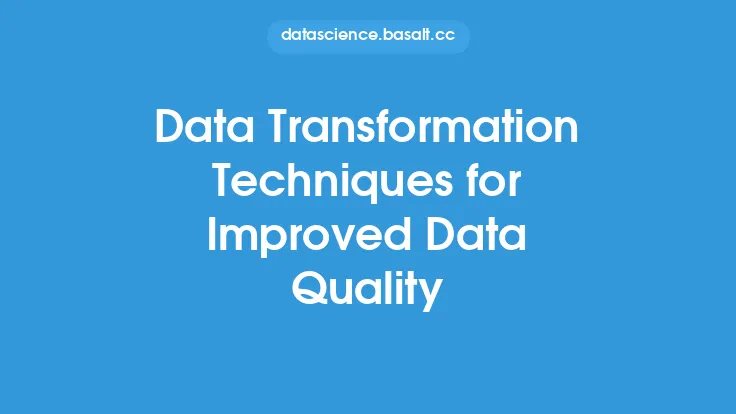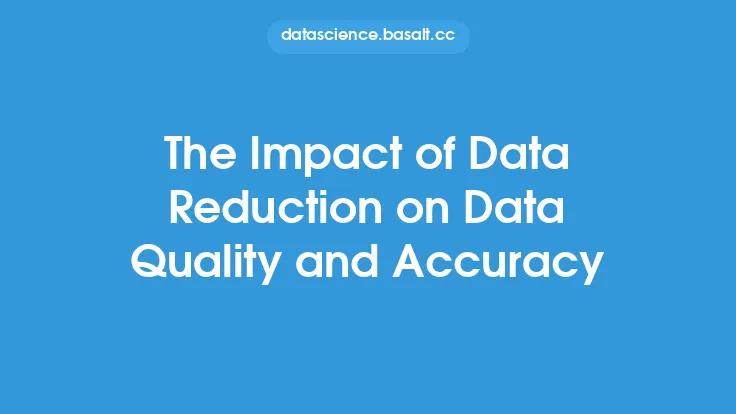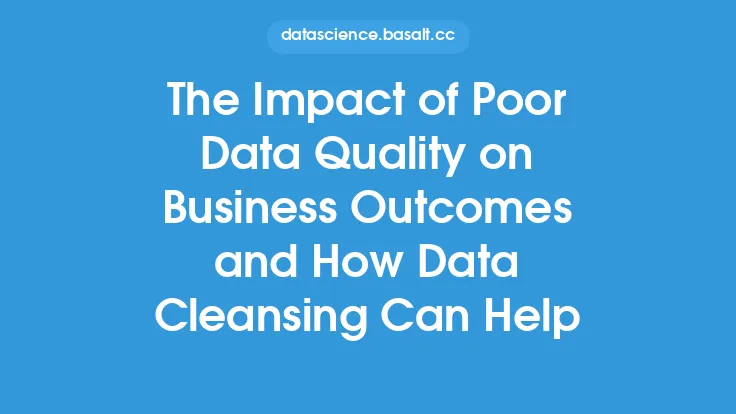Data transformation is a crucial step in the data analysis process, as it enables the conversion of raw data into a format that is suitable for analysis and modeling. The quality of the data is a critical factor in determining the accuracy and reliability of the results obtained from the analysis. In this article, we will explore the relationship between data transformation and data quality, and discuss the various techniques and methods used to transform data while maintaining its quality.
Introduction to Data Quality
Data quality refers to the degree to which the data is accurate, complete, consistent, and reliable. High-quality data is essential for making informed decisions, as it provides a solid foundation for analysis and modeling. Data quality issues can arise from various sources, including data entry errors, measurement errors, and data processing errors. These issues can have a significant impact on the results obtained from the analysis, and can lead to incorrect conclusions and decisions.
The Impact of Data Transformation on Data Quality
Data transformation can have both positive and negative impacts on data quality. On the one hand, data transformation can improve data quality by converting raw data into a format that is more suitable for analysis and modeling. For example, data transformation can be used to handle missing values, remove outliers, and normalize data. On the other hand, data transformation can also degrade data quality if not performed correctly. For example, if the transformation is not reversible, or if it introduces errors or biases into the data, it can lead to a loss of information and a decrease in data quality.
Techniques for Data Transformation
There are various techniques used for data transformation, including aggregation, grouping, and normalization. Aggregation involves combining multiple values into a single value, such as calculating the mean or sum of a set of values. Grouping involves categorizing data into groups based on certain characteristics, such as age or gender. Normalization involves scaling data to a common range, such as between 0 and 1, to prevent differences in scales from affecting the analysis.
Data Transformation Methods
There are several data transformation methods, including linear transformation, logarithmic transformation, and polynomial transformation. Linear transformation involves multiplying the data by a constant and adding a constant, such as scaling and shifting. Logarithmic transformation involves taking the logarithm of the data, which can be used to handle skewed distributions. Polynomial transformation involves raising the data to a power, such as squaring or cubing, which can be used to handle non-linear relationships.
Best Practices for Data Transformation
To ensure that data transformation is performed correctly and does not degrade data quality, several best practices should be followed. First, the data should be thoroughly cleaned and preprocessed before transformation to remove any errors or inconsistencies. Second, the transformation should be reversible, meaning that the original data can be recovered from the transformed data. Third, the transformation should be documented, including the method used and the parameters applied. Finally, the transformed data should be validated to ensure that it is accurate and reliable.
Common Challenges in Data Transformation
There are several common challenges that arise in data transformation, including handling missing values, removing outliers, and dealing with non-linear relationships. Missing values can be handled using techniques such as imputation or interpolation, while outliers can be removed using techniques such as winsorization or trimming. Non-linear relationships can be handled using techniques such as polynomial transformation or logarithmic transformation.
Tools and Technologies for Data Transformation
There are several tools and technologies available for data transformation, including programming languages such as Python and R, and software packages such as Excel and SQL. These tools provide a range of functions and features for data transformation, including data cleaning, data normalization, and data visualization. Additionally, there are several specialized tools and technologies available for specific types of data transformation, such as text processing and image processing.
Conclusion
In conclusion, data transformation is a critical step in the data analysis process, and its relationship with data quality is complex and multifaceted. By understanding the various techniques and methods used for data transformation, and by following best practices for data transformation, data analysts can ensure that their data is accurate, complete, consistent, and reliable. Additionally, by being aware of the common challenges that arise in data transformation, and by using the right tools and technologies, data analysts can overcome these challenges and obtain high-quality results from their analysis.





